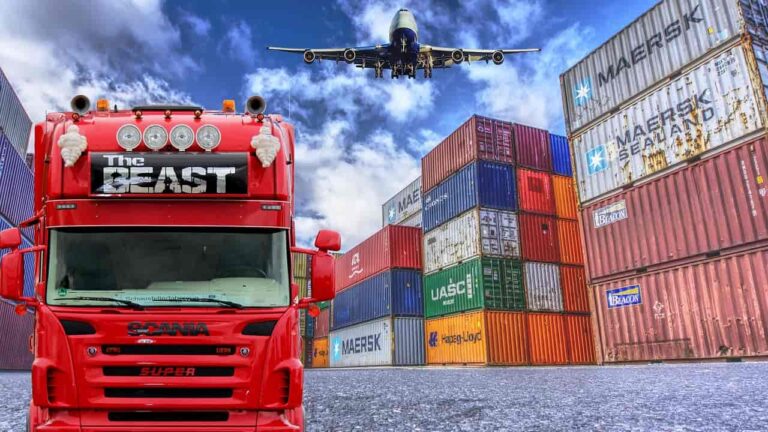Continuous Improvement: A Fighter Pilot’s Culture of High Performance
Eighty percent of all change initiatives fail. As you might imagine, that is a shocking statistic for those responsible for investing in change initiatives. So what works? Companies of any size can reap the rewards of a fighter pilot’s Culture of Performance by driving a culture focused on performance, execution and excellence. A rapidly changing environment isn’t a phenomenon that only fighter pilots face.
With increasing health, energy, and education costs combined with increasing global competition, developing a strong Culture of Performance is essential for all organizations. Sticking to proven Continuous Improvement processes, combined with developing Leadership skills and High Performing Team behaviors, will allow you to concurrently satisfy customer requirements while maintaining sustainable growth, and profitable financial margins ensuring your current and future organizational long-term health.
Navy and Marine Corps fighter pilots’ performance and effectiveness in the challenging, dynamic air combat arena have long been characterized by Leadership, Discipline, Continuous Improvement, Performance, and an Esprit de Corps. Our goal was to always achieve an end result as efficiently and productively as possible. High Performing Organizations know that understanding and leveraging these same principles in their own organizations can make the difference between survival and defeat.
Anything less can take you out of the fight.
Most leaders and managers that I work with have heard about the benefits of having a performance-based culture. I am often asked, “How does my organization achieve this ‘High Performing Organization Culture’ and reap the benefits that you’ve talked about?
This paper will focus on performance. To understand how we got to this place – a strong Culture of Performance – we need to start at the beginning.
High Performing Organizations, like aircraft carrier aviation squadrons, don’t take their culture for granted. They define it through actions, manage it by debriefing against it and instill it by holding people accountable.
Pensacola, FL in summertime is an oppressive place, not recommended for the faint-hearted. For decades, referred to as “The Cradle of Aviation”, this sprawling air station was the perfect place to begin training to become a Naval Aviator or the place where your dreams may end. Here the transition began from post-collegiate life to military life. For those of us who successfully made it through training, it is a place where Performance and Continuous Improvement became the foundation for all that followed. In order to be successful it was necessary for every individual to have a willingness to manage limited time, resources, learn to take criticism, adjust, improve and work as a team – or you washed out. An extremely small percentage of candidates would go on to become aircraft carrier fighter pilots. Our lives and those of others would depend on mastery of these leadership skills and traits.
My office environment as a Naval Aviator includes not only the cockpit, but a full time ‘administrative’ job, PLUS the flight deck of an aircraft carrier. Viewed as a minuscule little postage stamp violently bobbing up and down on the sea, an aircraft carrier offers up an impossibly tiny area in which to land. Add to this darkness, bad weather, exhaustion and the ever present platform camera broadcasting our landings to all the sailors throughout the carrier on televisions, and the pressure to perform is acute.
When deployed, today’s aircraft carriers have a crew of approximately 5,000 women and men onboard. It is an industrial worksite unlike any other in the world. The hours are long, the work is grueling and it requires the effort and top-notch performance of all on the carrier to get the job done safely and efficiently.
Operating onboard an aircraft carrier is one of the most dangerous jobs in the world. Every minute you are onboard an aircraft carrier exposes you to extreme danger. The risks are high and mistakes costly. The margin for error is extraordinarily slim and the only way to mitigate some of these factors is through training, constant clear communications and coaching. As fighter pilots, we routinely work 12-16 hour days, 7 days a week, preparing, briefing, flying, and debriefing our missions.
Operating safely and with expedience requires sticking to our effective, historically proven processes with intense focus, clarity and dedication to achieving our mission objectives. Our patterns of behavior, the purposefulness with which we go about our work is all about Continuous Improvement and accountability.
So how can your organization develop a Culture of Performance similar to this? Let’s take a look at three best practices that can help you lay the groundwork for your own high performance and growth within your organization.
First: Define your Culture of Performance through Leadership by Example.
What I know to be true from both my military and corporate experience is that it starts at the top.
Organizations that have enjoyed extraordinary success have leaders that have led by example. “Ductus Exemplo” is Latin, translated “Lead by Example”. The concept is foundational to how United States Navy officers are trained to lead. Officers must set the example for their troops in every aspect of their life – both on the battlefield, or aircraft carrier – and off. Achieving high performance results requires multi-level, full engagement from all parties.
In our community only those missions that are relevant to achieve our desired effect or mission objective are launched. Those involved clearly understand their role in the mission and the benefit they provide. In your organization, you must be able to demonstrate a clear link between business priorities and project priorities, while communicating what the expected outcomes are and their business impact. Showing relevance will help to create that needed buy-in, but expect to work hard to maintain it.
Leading and growing a High Performance Culture does not start at the bottom.
Neither sailors nor employees can be battered into producing more. Clearly communicating your vision for the Future Picture, and articulating how your team can align their efforts to help the organization achieve that vision is vital. As Douglas R. Conant, president and CEO of the Campbell Soup Company states, “You have to model the behavior; you have to be the change that you want from your company.”
Second: Manage and grow your organization by incorporating constant learning habits.
What we call a Culture of Learning, is a hallmark of carrier aviation. The ideas of learning before doing, learning during and learning after guide all that we do. The preparation phase for us before we attempt a mission is extensive. Also, in the preparation phase, we plan to debrief after every event. We learn while doing, by taking the time to continually ask the question, “Will this action help me achieve my desired effect, or mission objective?” In both training and mission execution, the debrief is an essential part of our learning after doing process.
In order to learn from the execution, and from our mistakes, we take the time after every mission, with all the pilots or others who had a stake in the mission, to recall and reconstruct the mission and to analyze exactly what we did right, what we did wrong and why did the results possibly differ from what was intended. This allows us to reduce our time to insight and adjust as a team to a rapidly changing environment successfully. We finish by focusing on what we can do better on the next mission. We do this each and every time without exception because it is so effective.
The debrief is a critical aspect of developing trust and transparency within your team as well. High performing team members and those dedicated to Operational Excellence understand that transparent communication, and a common understanding of a teams’ problems are critical to an organizations success. Unfortunately, it is often overlooked.
Think of how this applies to your world. By identifying gaps through value stream analysis, we can establish priorities and required corrective actions quickly. If we take the time to do it, and then clearly communicate next steps.
In order to generate precious shareholder value, an organization needs to learn faster than its competitors, and apply that knowledge throughout the company quickly. Most projects, product roll outs, meetings or practices are not just one-time events. If you are not taking the time to debrief, how do you expect your results to improve? How are you capturing lessons learned and sharing knowledge? Help your team maximize their performance by taking the time to debrief!
Debriefs are simple to do and get quick results. A thorough debrief can quickly reduce complexities, and help both leadership and team members to improve alignment amongst your mission specific requirements.
Third: Instill your Culture of Performance by holding people accountable.
Even though there is enormous individual and team effort within fighter squadrons, accountability is still paramount. Carrier aviation demands it, lives are at stake.
Every cycle of launching and recovering aircraft is measured and scored in many different ways. Data is compiled and constantly screened and debriefed looking for both consistency and areas that need improvement. This focus of effort drives a culture that puts a priority on improving performance.
Every aviator is responsible for maintaining flight discipline and proficiency, regardless of age, rank or experience. In addition, even when flying a full flight schedule and working long days, professional development is still required. Studying, training, testing and meeting operational obligations with limited resources; all this needs to be accomplished in that same 24 hour day that we are all given to work with. A good quarter, or a good year, filled with economic success is no guarantee of future rewards – think about the collapse of AIG or Enron. Individuals were not held accountable and the whole organization suffered. Pensions lost, jobs lost, security gone-all because a lack of accountability.
Quick wins can come from sharing what we know in order to drive phenomenal high performance, execution and the pursuit of excellence. Gain strategic agility, focus, team alignment and efficiencies in execution to achieve better results for your organization today. Continuous Improvement for us is not just a catchphrase but a way of life.
By Carey “Vixen” Lohrenz

Carey Lohrenz knows what it takes to win in one of the highest pressure, extreme environments imaginable: in the cockpit at Mach 2.
As the first female F-14 Tomcat Fighter Pilot in the U.S. Navy, having flown missions worldwide as a combat-mission-ready United States Navy pilot, Lohrenz is used to working in fast moving, dynamic environments, where inconsistent execution can generate catastrophic results.
For more information on Carey: www.careylohrenz.com






